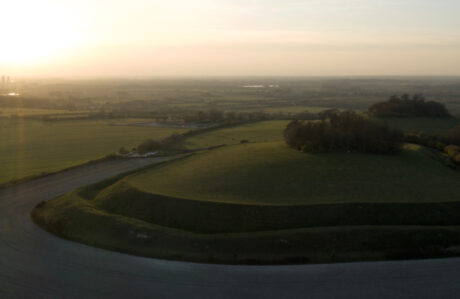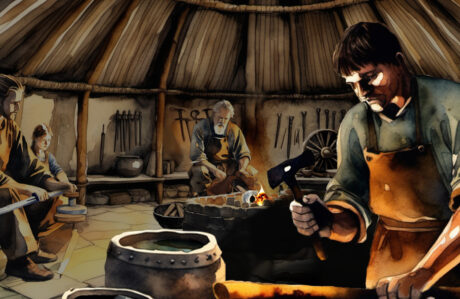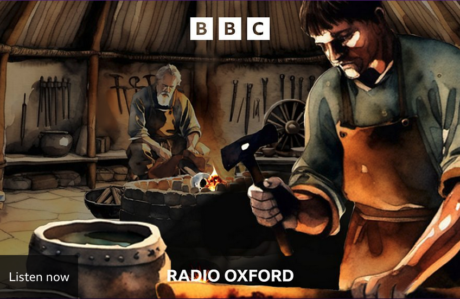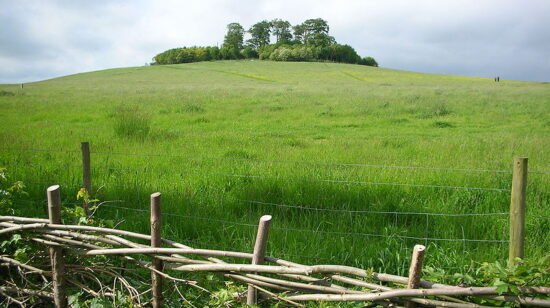The earliest known example of medieval prayer beads in Britain has been found during excavations on the island of Lindisfarne.
The excavations, which are crowdfunded by the public every year and led by archaeologists from DigVentures and Durham University, is gradually unearthing the lost history of Lindisfarne, also known as Holy Island, one of Britain’s most historic ancient sites just off the coast of Northumberland.
In previous years, discoveries have included runic namestones and carvings, an early medieval gaming piece, coins, and several early medieval burials – all associated with the early monastery that was famously raided by Vikings in AD 793.
The beads, which are over 1,200 years old and date from the 8th to 9th century AD, are made from salmon vertebrae. The tiny bones were found clustered around the neck of a skeleton who had been buried within a cemetery area of the site, which also includes the remains of buildings.
Similar beads made from modified fish bones had previously been found by archaeologists at the nearby medieval chapel at Chevington, also in Northumberland. But they were from Atlantic cod, among other fish, and that burial dated from the 13th or 14th century, whereas the Lindisfarne discovery is significantly older.
Archaeology on Lindisfarne
Lindisfarne’s famous monastery was established by the Kings of Northumbria in the 7th century as an important religious centre and became the scene of the first major Viking raid on Britain in the 8th century.
It was there that monks created the Lindisfarne Gospels – the most spectacular manuscript to survive from Anglo-Saxon England.

An archaeologist carefully exposes a burial on the site of the early medieval monastery on Lindisfarne. The site also includes the remains of early buildings and religious sculptures.
Dr David Petts, the project co-director and a Durham University specialist in early Christianity, says that the fish vertebrae appear to be prayer beads for personal devotion:
“We think of the grand ceremonial side of early medieval life in the monasteries and great works like the Lindisfarne Gospels. But what we’ve got here is something which talks to a much more personal side of early Christianity.”
He paid tribute to Marina Chorro Giner, a zooarchaeologist, for recognising the significance of the vertebrae:
“This bright, eagle-eyed researcher looked at them and said, actually these aren’t just fish bones, they’ve been modified and turned into something.”
The significance of fish

Small fish vertebrae have been modified to create beads that could be used for prayer. They were found clustered around the neck of a skeleton, which are thought to be the remains of a monk or other person associated with the early monastery.
Discussing the significance of fish and the sea to the island’s medieval inhabitants, he referred to a monk called Cuthbert, who joined Lindisfarne in the 670s and went on to become the most important saint in northern England in the Middle Ages:
“We also have the stories of Christ and the Apostles being fishermen and going on the Sea of Galilee and calming storms. We see in Bede’s Life of St Cuthbert, Cuthbert calming storms. So the sea is symbolically important.”
The beads offer significant information for understanding how people in the past lived and expressed their beliefs through objects.
Their position around the neck suggested that they had been strung like a necklace. The naturally-occurring hole through the centre of salmon vertebrae had been widened, either before threading or through wear.
The discovery follows ongoing excavations at Lindisfarne by DigVentures, an archaeology social enterprise in which volunteers work alongside professionals, as well as Durham University.
‘Remarkable find’
Lisa Westcott Wilkins of DigVentures described it as “a remarkable find”:
“Clearly it was important enough that this person was buried with it. This is the only artefact from within a grave on Lindisfarne, so it’s a significant item. As far as we’re aware, it’s the first example of prayer beads found anywhere in medieval Britain.”
She added: “We believe these beads were used as a personal object of faith, especially given that our modern word bead comes from the Old English gebed, meaning ‘prayer’.”
Such is the enormity of the site that the team will continue their excavations for another four years. Other finds have included runic namestones, coins and copper rings.







There are no comments on this post yet. Be the first!